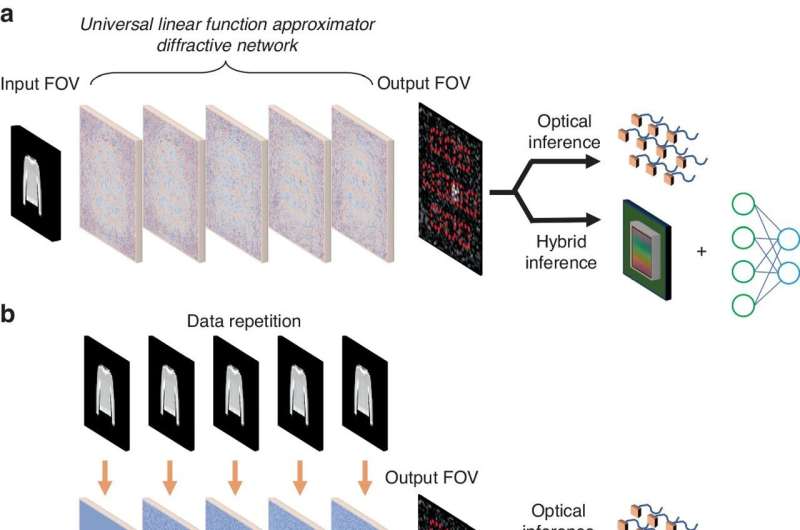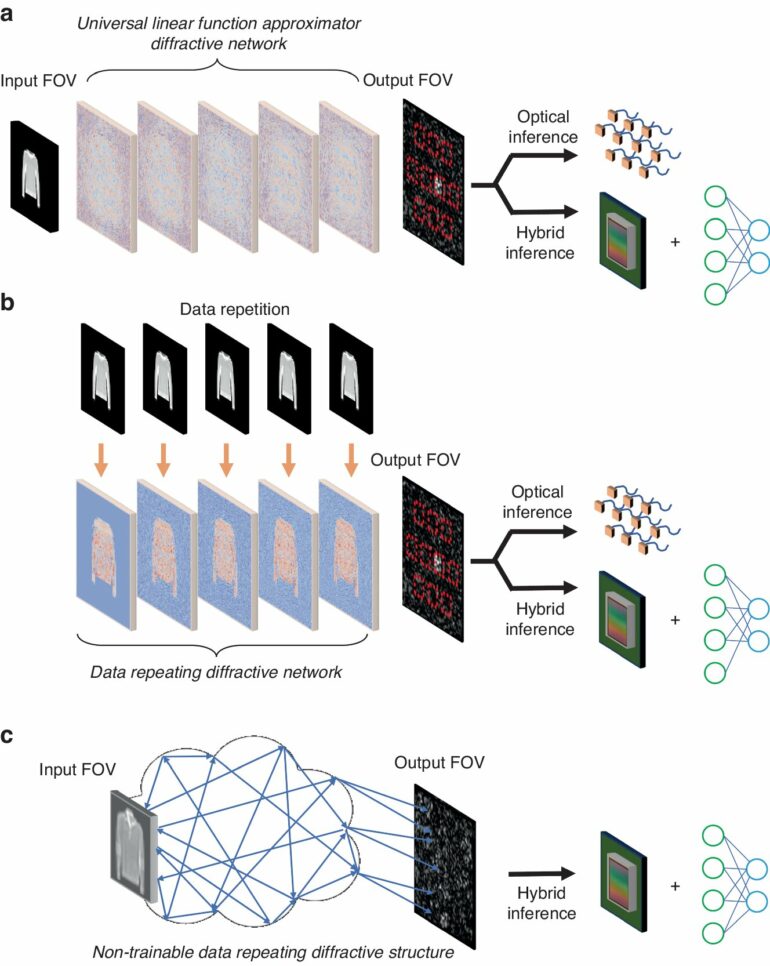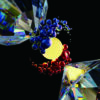UCLA researchers have conducted an in-depth analysis of nonlinear information encoding strategies for diffractive optical processors, offering new insights into their performance and utility. Their study, published in Light: Science & Applications, compared simpler-to-implement nonlinear encoding strategies that involve phase encoding with the performance of data repetition-based nonlinear information encoding methods, shedding light on their advantages and limitations in the optical processing of visual information.
Diffractive optical processors, built using linear materials, perform computational tasks through the manipulation of light using structured surfaces. Nonlinear encoding of optical information can enhance these processors’ performance, enabling them to better handle complex tasks such as image classification, quantitative phase imaging, and encryption.
The UCLA research team, led by Professor Aydogan Ozcan, evaluated various nonlinear encoding strategies using different datasets to assess their statistical inference performance. Their findings revealed that data repetition within a diffractive volume, while enhancing inference accuracy, compromises the universal linear transformation capability of diffractive optical processors.
As a result, data repetition-based diffractive blocks cannot serve as optical analogs to fully-connected or convolutional layers commonly used in digital neural networks. More generally, data-repetition-based diffractive processors can be perceived as a simplified optical analog of the dynamic convolution kernel concept used in some neural network architectures. Despite its different features, data repetition architecture within a diffractive optical processor is still effective for inference tasks and offers advantages in terms of noise resilience.

Different nonlinear encoding methods for diffractive optical processors using linear optical materials. © Light: Science & Applications (2024). DOI: 10.1038/s41377-024-01529-8
As an alternative, phase encoding of input information, without data repetition, offers a simpler-to-implement nonlinear encoding strategy with statistically comparable inference accuracy. Implemented through spatial light modulators or phase-only objects, directly, phase encoding is a practical alternative due to its simplicity and effectiveness.
Furthermore, diffractive processors without data repetition do not need pre-processing of input information through a digital system, which is required for visual data repetition. Therefore, data repetition can be time-consuming, especially for phase-only input objects, due to the need for digital phase recovery and pre-processing before visual data repetition can occur.
The research team’s findings provide valuable insights into the push-pull relationship between linear material-based diffractive optical systems and nonlinear information encoding strategies. These results hold the potential for a wide range of applications, including optical communications, surveillance, and computational imaging.
The ability to enhance inference accuracy through nonlinear encoding strategies can improve the performance of optical processors in various fields, leading to more advanced and efficient visual information processing systems.
The authors of this article include Yuhang Li, Jingxi Li, and Aydogan Ozcan, all affiliated with the UCLA Electrical and Computer Engineering Department. Professor Ozcan also serves as an associate director of the California NanoSystems Institute (CNSI).
More information:
Yuhang Li et al, Nonlinear encoding in diffractive information processing using linear optical materials, Light: Science & Applications (2024). DOI: 10.1038/s41377-024-01529-8
Provided by
UCLA Engineering Institute for Technology Advancement
Citation:
New work sheds light on nonlinear encoding in diffractive optical processors based on linear materials (2024, July 23)



